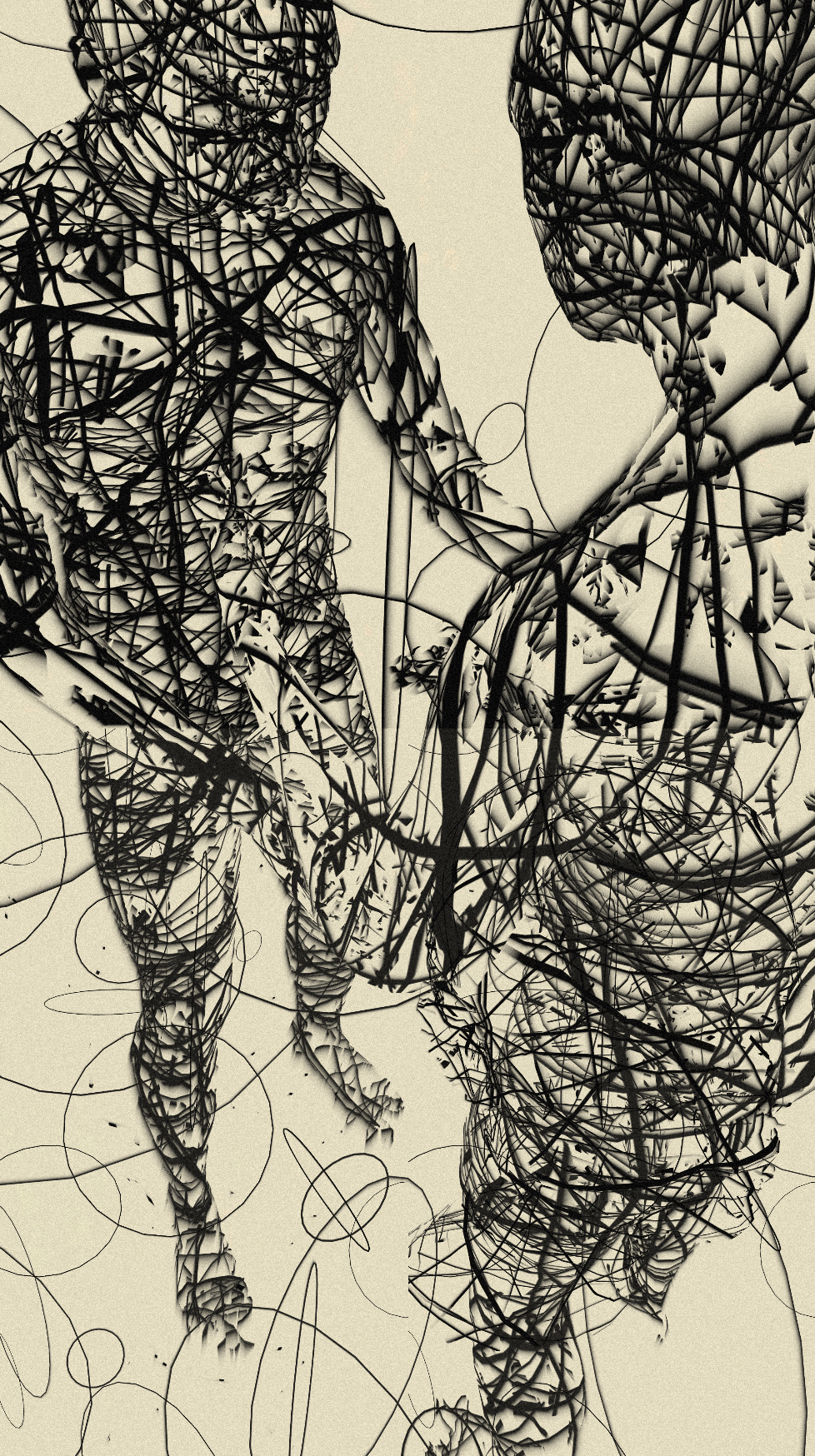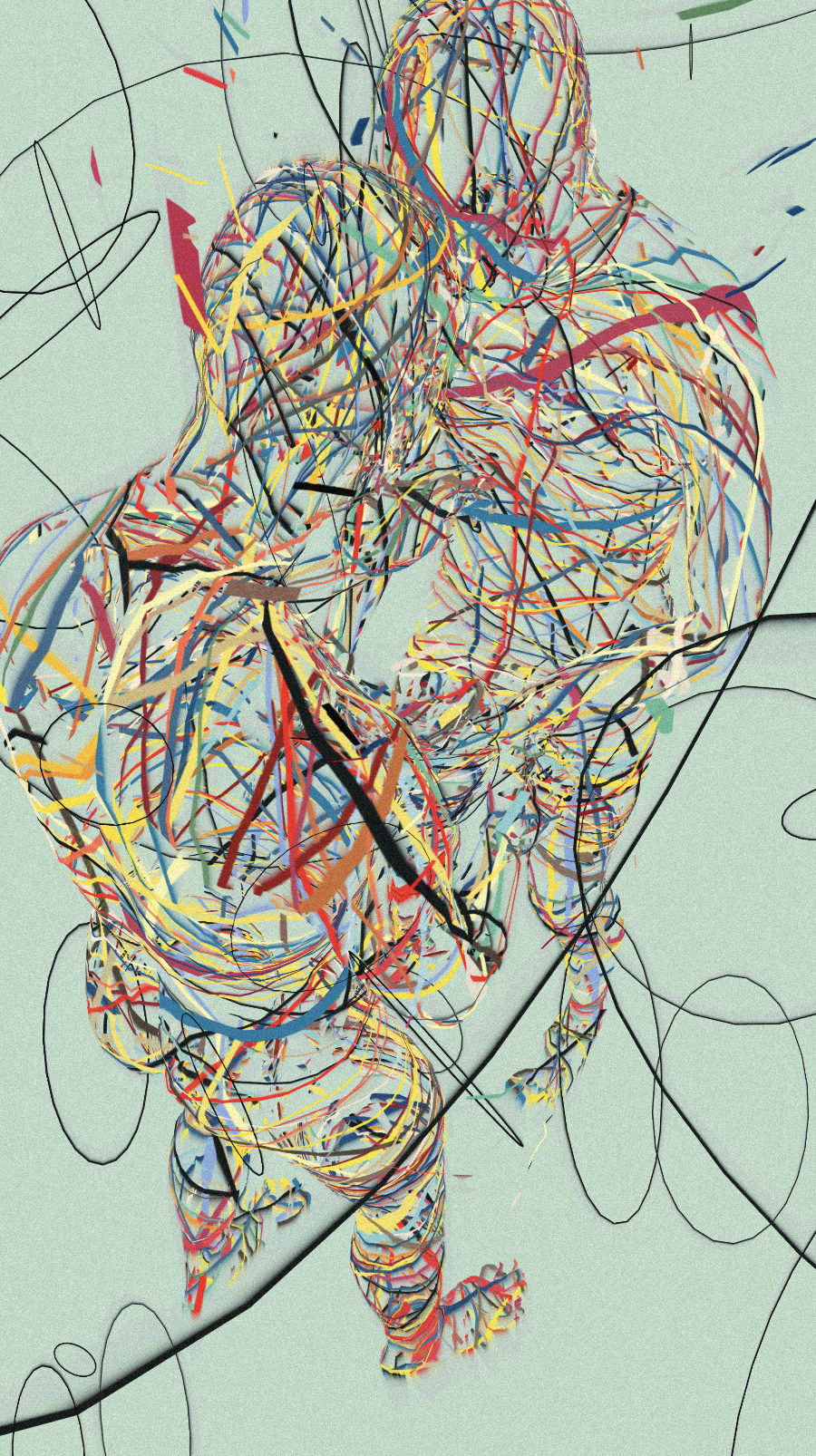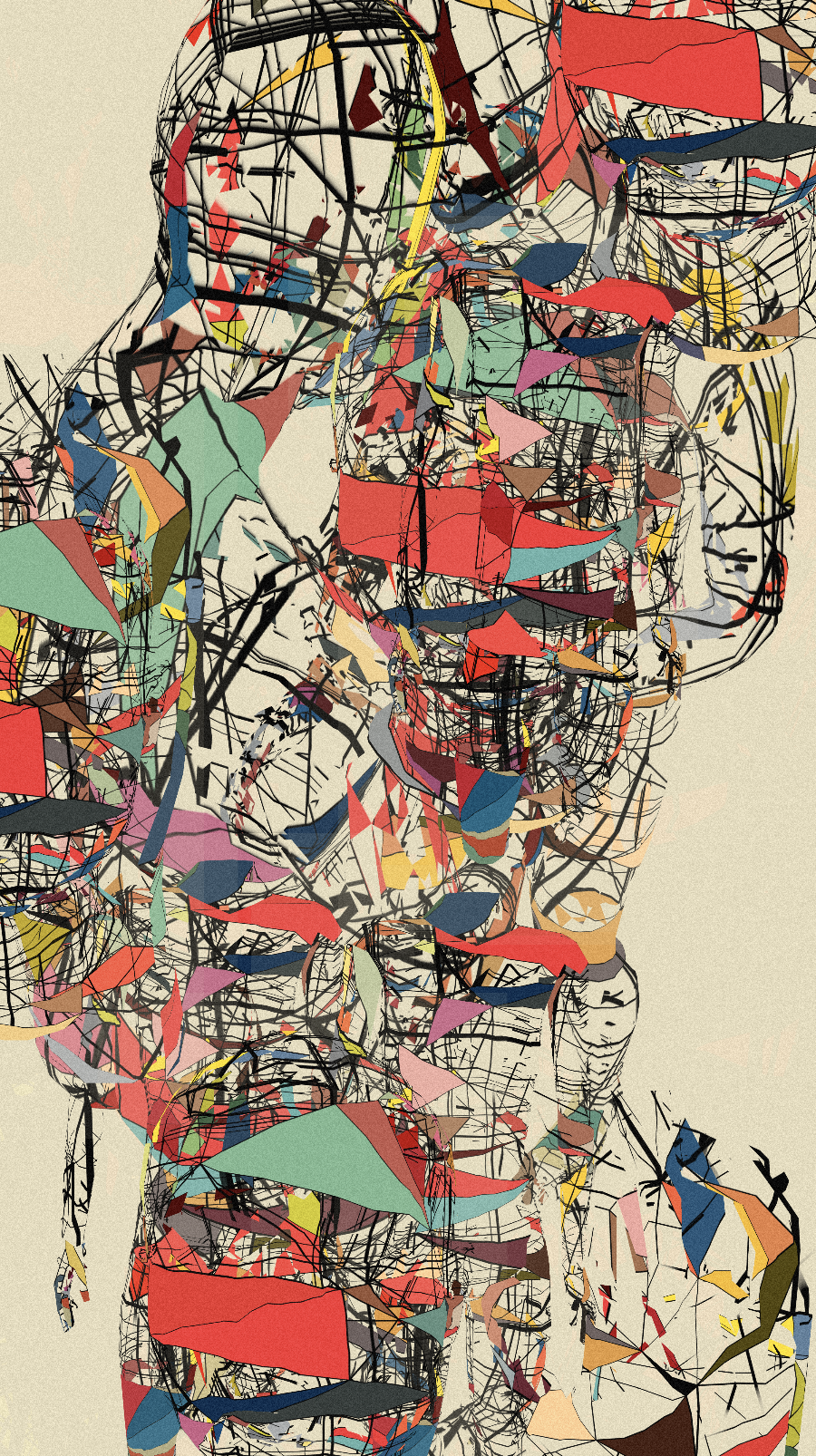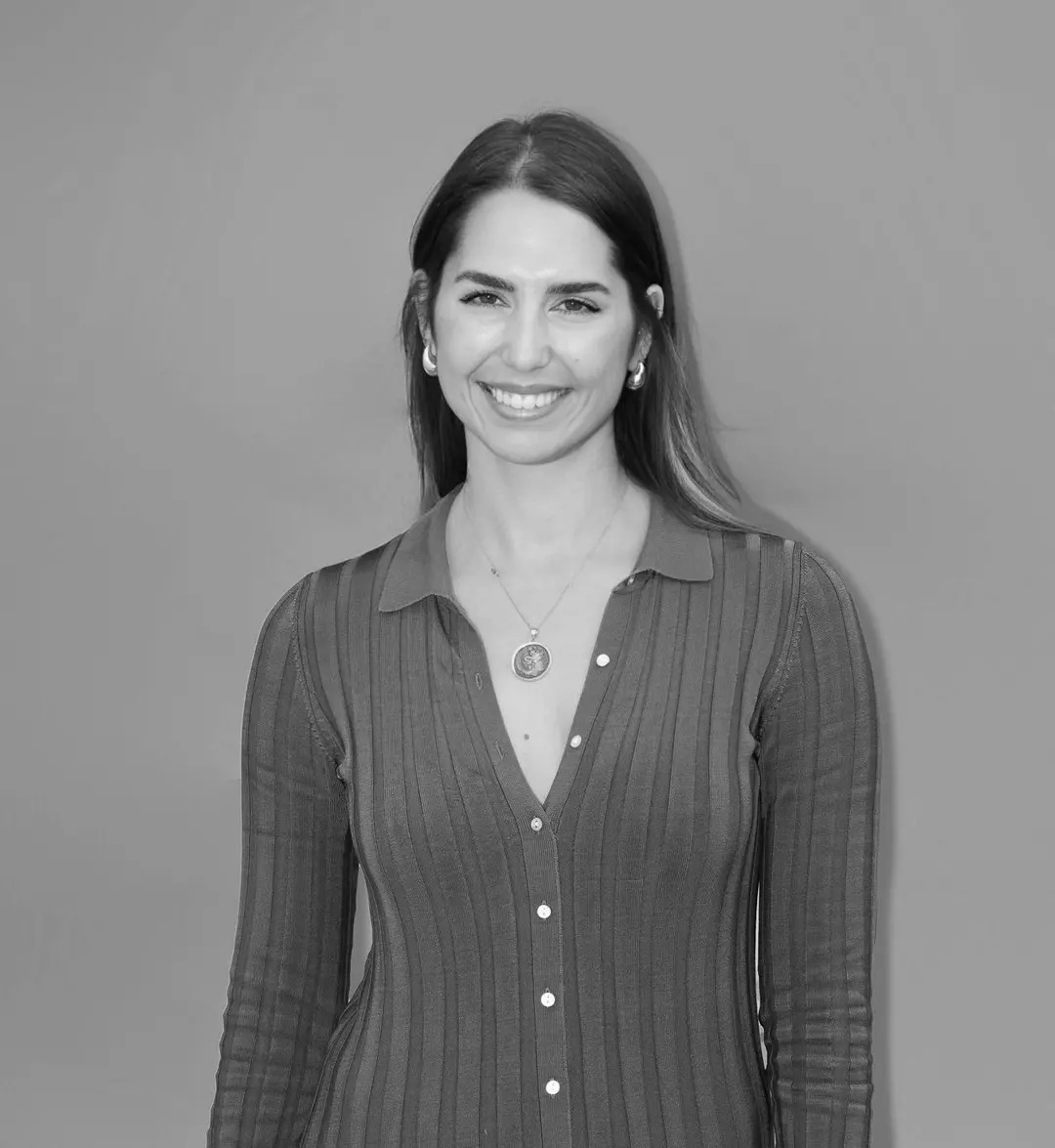
Juan Rodríguez García on Inhabiting the Moment

Juan Rodríguez García on Inhabiting the Moment
Artist Juan Rodríguez García speaks with Sofia Garcia about Habitar un Momento, a generative system commissioned by Le Random that explores impermanence and contemplation through real-time animation. The discussion covers the artist’s architectural roots, shift toward creative coding and view of the piece as a “living entity.” Originally conducted in Spanish, the interview is presented here in English translation.
Sofia Garcia: Let's start with the title of the work, Habitar un Momento, which roughly translates to Inhabit the Moment. What does this statement mean to you and how does it frame the experience of this piece?
Juan Rodríguez García: I would define Habitar un Momento as an exercise in visual contemplation that tries to highlight concepts such as impermanence and the perception of time.
I like to think of this project as something that was built from the experience of being present in all instances of life. The piece doesn't pause; it constantly fades into new compositions with no possibility of retaining or anticipating these changes. The title comes from these initial ideas around the impermanence of these times.

Sofia Garcia: Considering this work as an exercise in contemplation, do you view the audience as active participants in that contemplative act, or is it a more personal experience?
Juan Rodríguez García: It's a bit of both because in a way it's personal since it comes from times of impermanence that I’ve experienced in my own life.
My hope is to extend the same contemplative experience to viewers, inviting them to take a second to engage with the work on a similar personal level.
The goal isn't necessarily for them to dwell on the work's underlying concepts but to offer viewers a dedicated opportunity for contemplation, which might lead them to new perspectives.
Sofia Garcia: Within your system the figures become structures in a transitory sketch, deconstructing strict notions of architecture, drawing and the human body. Was the incompleteness an artistic or philosophical decision?
Juan Rodríguez García: The aesthetic of the architecture and human elements is an artistic decision, as they’re directly related to the research materials of the work. Older schematic sketches of anatomical bodies and architectural plans resonate with the feeling of imperfection I wanted to convey. They're built through sketches and transformation, making them impermanent and incomplete.
It’s also a philosophical decision since this imperfection directly links to ideas of impermanence, which I wanted the work to underline. The incompleteness and constant change of each element in the work helps lead into these acts of contemplation.

Sofia Garcia: Could you discuss your architectural roots? How have they affected your approach to your artistic practice?
Juan Rodríguez García: For me, studying architecture really came down to two key aspects. One isn't unique to architecture but applies to any field of design, whether it's industrial or graphic. This involves understanding design’s fundamental concepts and foundations: principles like rhythm, color, composition, scale and proportion. These are universal ideas that reappear in almost any creative discipline and play a big role in how I create today.
As a student, I was immersed in the formal aspects of composition within the architectural lens. I was really interested in the work of Coop Himmelb(l)au, Zaha Hadid and Frank Gehry. Their complex forms visually and artistically captivated me beyond other formal architectural issues. I started using 3D modeling software to replicate and generate their forms. This would eventually lead me to think about my artistic approach to technology as a medium.
I was drawn to how technology allowed for a dynamic dialogue between my creative ideas and the software's capabilities.
During these early explorations, I was still stuck in my architectural focus. The constraints that came with that focus didn’t allow me to push too many artistic boundaries. Eventually my practice expanded beyond the scale of architecture into a more compositionally focused art practice. This also allowed me to branch out to new tools, freeing me from the constraints of generic 3D modeling software, which required a lot of computing power.
I became fascinated with tools like Processing and p5.js, which were open source and never required you to pay for a license. There was also something great about the level of control you could have over code. With architecture I could control my initial design process but was powerless when it came to issues around construction, budget or even environmental concerns. Over the years, I’d continue to explore the fundamentals of programming and code, nurturing my own styles and visual elements along the way.
Anyone can learn a tool but the experience and subjectivity we develop are what truly shape our identity and how we express our ideas. Throughout this time I never became fully detached from architecture in terms of the fundamental design concepts I mentioned earlier but I did become detached from the commercial and practical nature of the field.
.png)
Sofia Garcia: How did you approach designing a real-time system that is both technically efficient and conceptually rich? Did you ever feel the need to prioritize the technical aspects over conceptual vision?
Juan Rodríguez García: I wouldn't say that I necessarily prioritized the technical aspect over the conceptual aspect but there definitely was a balance between the two. Since I don't typically work with pieces that run in real-time on the web, my first step when Le Random commissioned a real-time software piece was to solve the technical challenges surrounding that need. This gave me the foundational base to build the aesthetic elements of the work.
In my regular practice, my daily sketches and explorations are often quick and serve as these short dialogues with the code. They are essentially a collection of sketches that may eventually become a finished piece. I tend to add to the code of these daily sketches without much cleanup, but for this piece I had to be mindful of its performance and the ability to control specific elements with keyboard inputs. It was a delicate process to find a balance between keeping the final creative vision I had in mind while also making sure the technical abilities were sound.
Sofia Garcia: The visual language of the piece is very layered. You intertwine drawn textures with geometric backgrounds, swaths of color and shifting of palettes. Can you tell us how each of these different elements and layers contribute to honoring a singular moment?
Juan Rodríguez García: Each viewer’s focus will be different due to how we personally visualize or perceive an object at a given time. Personally, my initial ideas and perceptions are rooted in architecture but what about others? We all have different views around these key elements. They could be perceived as architectural pieces, sculptures or any other object in their familiar spaces.
Our perspective and even the environment in which we live influence how we perceive things. The ever-changing palettes and geometric backgrounds reflect the way our surroundings and perceptions change over time. In particular, the textures represent this ongoing transformation; they start to emphasize the fleeting nature of each component as they become incorporated into new compositions.
These layers accumulate and amount to these brief instances of information. It's a never-ending process of including and removing different parts as our focus changes, adding to this constant exercise of contemplation we mentioned. The textures specifically symbolize this constant change.
Sofia Garcia: You’re guided by anatomical drawings and architectural drafts, yet the work deliberately resists these forms’ precision and structural stability. How does that energy cue viewers to reflect on their own embodiment?
Juan Rodríguez García: That's an interesting question because it speaks to our relationship with ourselves and our perception of the present. It touches back on the idea of impermanence, that nothing lasts forever, not even seemingly enduring architectural structures. Everything has a beginning and an end and how we perceive that lifespan is subjective. For us, a human life of seventy, eighty or ninety years might seem brief when viewed against the vastness of the universe. In that macrocosmic sense, our time here is but a fleeting blip.
All of us are in constant change and parts of a larger whole. As a result, viewers experience the unity of all the work's elements even as they perceive distinct structures within it. It aims to convey the idea that we are a part of a constantly changing system and that, despite our imperfections, the moment in which we exist is essential to the whole.

Sofia Garcia: The system is quite dynamic and interactive. Can you give more insight into the ten modes that you created as part of the system?
Juan Rodríguez García: To preface this, I’d like to say I view the work as a cohesive whole, an integrated system rather than a collection of separate modes. I also don’t see my dialogue with technology as strictly programming, dictating the ten modes and their exact structure. Instead, I rely on the computer to unpredictably arrange and generate these predetermined elements. However, these ten modes do help provide the underlying structure for the work, allowing us to have better control of each transitory event.
Each mode informed how I visualized and represented the work’s scale and proportions at different points. This approach helped provide more information about the work, allowing for a better understanding of it from various perspectives.
Sofia Garcia: Artists have different philosophies when it comes to how they frame generative systems. In your view, is the artwork the discrete outputs the system generates or the continuous, evolving process of the system itself?
Juan Rodríguez García: From the very beginning I never visualized the project as a series of outputs or individual pieces. The project itself doesn't allow you to pause it if you suddenly see a composition that you love, nor does it let you go back. So there was never a focus on specific frames but rather just the constant changes.
I perceive the system more as a living entity that's constantly changing and evolving, like the experience itself.
Sofia Garcia: In a brief encounter—even just a glance—what do you hope the work leaves with the viewer?
Juan Rodríguez García: That's a difficult question, isn't it? Each person will have their own experience. I hope each viewer has an experience of tranquility and contemplation. Maybe the work leads them to reflect on the ideas of impermanence and its philosophical underpinnings we’ve discussed here. I really just want them to do as the title entails: inhabit the moment.
-----
Juan Rodríguez García is a generative artist whose work explores design and architecture through code as a tool for creation and expression. He teaches creative coding at Universidad Iberoamericana Puebla.
Sofia Garcia is a generative art dealer, curator and founder of ARTXCODE.
Edited and translated by Conrad House, Le Random’s Collection Lead. Thanks to Peter Bauman, Le Random's editor in chief.


